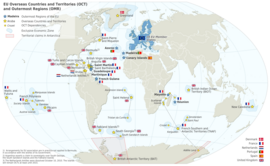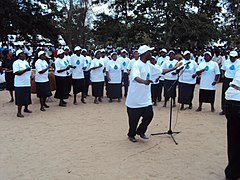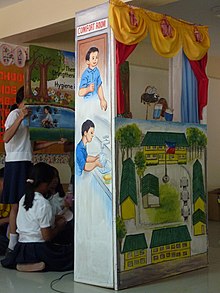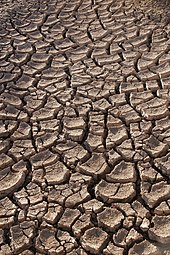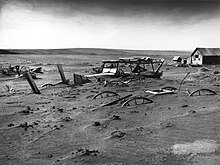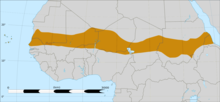Refuse zone in Chipata, Zambia
Neocolonialism is the practice of using capitalism [DJS -- ?], globalisation, cultural imperialism, and conditional aid to influence a developing country instead of the previous colonial methods of direct military control (imperialism) or indirect political control (hegemony).
Neocolonialism differs from standard globalisation and development aid
in that it typically results in a relationship of dependence,
subservience, or financial obligation towards the neocolonialist nation.
This may result in an undue degree of political control or spiraling debt obligations, functionally imitating the relationship of traditional colonialism.
Coined by the French philosopher Jean-Paul Sartre in 1956, it was first used by Kwame Nkrumah
in the context of African countries undergoing decolonisation in the
1960s. Neocolonialism is also discussed in the works of Western thinkers
such as Jean-Paul Sartre (Colonialism and Neocolonialism, 1964) and Noam Chomsky (The Washington Connection and Third World Fascism, 1979).
Term
Origins
Kwame Nkrumah (pictured on a Soviet postage stamp) is a Ghanaian politician who coined the term "neocolonialism"
When first proposed, neocolonialism labelled European countries'
continued economic and cultural relationships with their former
colonies, African countries that had been liberated in the aftermath of Second World War. Kwame Nkrumah, former president of Ghana (1960–66), coined the term, which appeared in the 1963 preamble of the Organisation of African Unity Charter, and was the title of his 1965 book Neo-Colonialism, the Last Stage of Imperialism (1965).
Nkrumah theoretically developed and extended to the post–War 20th
century the socio-economic and political arguments presented by Lenin in the pamphlet Imperialism, the Highest Stage of Capitalism (1917). The pamphlet frames 19th-century imperialism as the logical extension of geopolitical power, to meet the financial investment needs of the political economy of capitalism. In Neo-Colonialism, the Last Stage of Imperialism, Kwame Nkrumah wrote:
In place of colonialism, as the main instrument of imperialism, we have today neo-colonialism . . . [which] like colonialism, is an attempt to export the social conflicts of the capitalist countries. . . .
The result of neo-colonialism is that foreign capital is used for the exploitation rather than for the development of the less developed parts of the world. Investment, under neo-colonialism, increases, rather than decreases, the gap between the rich and the poor countries of the world. The struggle against neo-colonialism is not aimed at excluding the capital of the developed world from operating in less developed countries. It is aimed at preventing the financial power of the developed countries being used in such a way as to impoverish the less developed.
Non-aligned world
Neocolonialism was used to describe a type of foreign intervention in countries belonging to the Pan-Africanist movement, as well as the Bandung Conference (Asian–African Conference, 1955), which led to the Non-Aligned Movement (1961). Neocolonialism was formally defined by the All-African Peoples' Conference (AAPC) and published in the Resolution on Neo-colonialism. At both the Tunis conference (1960) and the Cairo conference (1961), AAPC described the actions of the French Community of independent states, organised by France, as neocolonial.
Françafrique
The representative example of European neocolonialism is Françafrique, the "French Africa" constituted by the continued close relationships between France and its former African colonies. In 1955, the initial usage of the "French Africa" term, by President Félix Houphouët-Boigny of Ivory Coast,
denoted positive social, cultural and economic Franco–African
relations. It was later applied by neocolonialism critics to describe an
imbalanced international relation. The politician Jacques Foccart, the principal adviser for African matters to French presidents Charles de Gaulle (1958–69) and Georges Pompidou (1969–1974), was the principal proponent of Françafrique.
The works of Verschave and Beti reported a forty-year,
post-independence relationship with France's former colonial peoples,
which featured colonial garrisons in situ and monopolies by French multinational corporations,
usually for the exploitation of mineral resources. It was argued that
the African leaders with close ties to France — especially during the
Soviet–American Cold War (1945–91) — acted more as agents of French
business and geopolitical interests, than as the national leaders of sovereign states. Cited examples are Omar Bongo (Gabon), Félix Houphouët-Boigny (Ivory Coast), Gnassingbé Eyadéma (Togo), Denis Sassou-Nguesso (Republic of the Congo), Idriss Déby (Chad), and Hamani Diori (Niger).
Belgian Congo
After the decolonisation of Belgian Congo, Belgium continued to control, through the Société Générale de Belgique,
an estimated 70% of the Congolese economy following the decolonisation
process. The most contested part was in the province of Katanga where the Union Minière du Haut Katanga,
part of the Société, controlled the mineral-resource-rich province.
After a failed attempt to nationalise the mining industry in the 1960s,
it was reopened to foreign investment.
Neocolonial economic dominance
People in Brisbane protesting Australia's claim on East Timorese oil, in May 2017
In 1961, regarding the economic mechanism of neocolonial control, in the speech Cuba: Historical Exception or Vanguard in the Anti-colonial Struggle?, Argentine revolutionary Ché Guevara said:
We, politely referred to as "underdeveloped", in truth, are colonial, semi-colonial or dependent countries. We are countries whose economies have been distorted by imperialism, which has abnormally developed those branches of industry or agriculture needed to complement its complex economy. "Underdevelopment", or distorted development, brings a dangerous specialisation in raw materials, inherent in which is the threat of hunger for all our peoples. We, the "underdeveloped", are also those with the single crop, the single product, the single market. A single product whose uncertain sale depends on a single market imposing and fixing conditions. That is the great formula for imperialist economic domination.
Dependency theory
Dependency theory
is the theoretical description of economic neocolonialism. It proposes
that the global economic system comprises wealthy countries at the
centre, and poor countries at the periphery. Economic neocolonialism
extracts the human and natural resources of a poor country to flow to
the economies of the wealthy countries. It claims that the poverty of
the peripheral countries is the result of how they are integrated in the
global economic system. Dependency theory derives from the Marxist
analysis of economic inequalities within the world's system of
economies, thus, under-development of the periphery is a direct result
of development in the centre. It includes the concept of the late 19th
century semi-colony.
It contrasts the Marxist perspective of the Theory of Colonial
Dependency with capitalist economics. The latter proposes that poverty
is a development stage in the poor country's progress towards full
integration in the global economic system. Proponents of Dependency
Theory, such as Venezuelan historian Federico Brito Figueroa,
who investigated the socioeconomic bases of neocolonial dependency,
influenced the thinking of the former President of Venezuela, Hugo Chávez.
Cold War
During the mid-to-late 20th century, in the course of the ideological
conflict between the U.S. and the U.S.S.R., each country and its satellite states accused each other of practising neocolonialism in their imperial and hegemonic pursuits. The struggle included proxy wars, fought by client states in the decolonised countries. Cuba, the Warsaw Pact bloc, Egypt under Gamal Abdel Nasser (1956–70), et al.
accused the U.S. of sponsoring anti-democratic governments whose
régimes did not represent the interests of their people and of
overthrowing elected governments (African, Asian, Latin American) that
did not support U.S. geopolitical interests.
In the 1960s, under the leadership of Chairman Mehdi Ben Barka, the Cuban Tricontinental Conference
(Organisation of Solidarity with the People of Asia, Africa and Latin
America) recognised and supported the validity of revolutionary anti-colonialism
as a means for colonised peoples of the Third World to achieve
self-determination, which policy angered the U.S. and France. Moreover,
Chairman Barka headed the Commission on Neocolonialism, which dealt with
the work to resolve the neocolonial involvement of colonial powers in
decolonised counties; and said that the U.S., as the leading capitalist
country of the world, was, in practise, the principal neocolonialist
political actor.
Multinational corporations
Critics of neocolonialism also argue that investment by multinational corporations enriches few in underdeveloped countries and causes humanitarian, environmental and ecological damage to their populations. They argue that this results in unsustainable development
and perpetual underdevelopment. These countries remain reservoirs of
cheap labor and raw materials, while restricting access to advanced
production techniques to develop their own economies. In some countries,
monopolization of natural resources, while initially leading to an
influx of investment, is often followed by increases in unemployment,
poverty and a decline in per-capita income.
In the West African nations of Guinea-Bissau, Senegal and
Mauritania, fishing was historically central to the economy. Beginning
in 1979, the European Union began negotiating contracts with governments
for fishing off the coast of West Africa. Commercial, unsustainable,
over-fishing by foreign fleets played a significant role in large-scale
unemployment and migration of people across the region. This violates the United Nations Convention on the Law of the Seas,
which recognises the importance of fishing to local communities and
insists that government fishing agreements with foreign companies should
target only surplus stocks.
International borrowing
To alleviate the effects of neocolonialism, American economist Jeffrey Sachs
recommended that the entire African debt (ca. 200 billion U.S. dollars)
be dismissed, and recommended that African nations not repay the World
Bank and the International Monetary Fund (IMF):
The time has come to end this charade. The debts are unaffordable. If they won't cancel the debts, I would suggest obstruction; you do it, yourselves. Africa should say: "Thank you very much, but we need this money to meet the needs of children who are dying, right now, so, we will put the debt-servicing payments into urgent social investment in health, education, drinking water, the control of AIDS, and other needs".
China
The People's Republic of China has built increasingly strong ties with some African, Asian, European and Latin American nations, becoming Africa's largest trading partner in 2009. As of August 2007, an estimated 750,000 Chinese nationals were working or living for extended periods in Africa. In the 1980s and 90s, China continued to purchase natural resources — petroleum and minerals — from Africa to fuel the Chinese economy and to finance international business enterprises. In 2006, trade had increased to $50 billion expanding to $500 billion by 2016.
In Africa, China has loaned $95.5 billion to various countries
between 2000 and 2015, the majority being spent on power generation and
infrastructure. Cases in which this has ended with China acquiring foreign land have led to accusations of "debt-trap diplomacy".
Other analysts have concluded that China is likely trying to "stockpile
international support for contentious political issues."
Commentators have stated that Western perceptions of China's
motives are misconstrued due to Western conceptions of development as
seen through their own lens of exploitation of others for resources—as
exemplified by European colonialism—instead of through Chinese
conceptions of development.
In 2018, Malaysian Prime Minister Mahathir Mohamad
cancelled two China-funded projects. He also talked about fears of
Malaysia becoming "indebted" and of a "new version of colonialism." He later clarified that he did not refer to the Belt and Road Initiative or China with this.
According to Anderlini of the Financial Times, Pakistan is at risk of becoming a colony of China.
Langan (2017) stated that Western actors tend to paint China as a
threat in Africa, othering it from themselves, but it neglects the fact
that Europe, the United States, China, and other emerging powers
likewise facilitate economic and political interests through aid and
trade in a manner that conflicts with African sovereignty.
South Korean land acquisitions
To ensure a reliable, long-term supply of food, the South Korean government and powerful Korean multinationals bought farming rights to millions of hectares of agricultural land in under-developed countries.
South Korea's RG Energy Resources Asset Management CEO Park
Yong-soo stressed that "the nation does not produce a single drop of crude oil
and other key industrial minerals. To power economic growth and support
people's livelihoods, we cannot emphasise too much that securing
natural resources in foreign countries is a must for our future
survival." The head of the Food and Agriculture Organization (FAO), Jacques Diouf,
stated that the rise in land deals could create a form of "
neocolonialism", with poor states producing food for the rich at the
expense of their own hungry people.
In 2008, South Korean multinational Daewoo Logistics secured 1.3 million hectares of farmland in Madagascar to grow maize and crops for biofuels. Roughly half of the country's arable land, as well as rainforests were to be converted into palm and corn monocultures, producing food for export from a country where a third of the population and 50 percent of children under 5 are malnourished,
using South African workers instead of locals. Local residents were not
consulted or informed, despite being dependent on the land for food and
income. The controversial deal played a major part in prolonged
anti-government protests that resulted in over a hundred deaths. This was a source of popular resentment that contributed to the fall of then-President Marc Ravalomanana. The new president, Andry Rajoelina, cancelled the deal. Tanzania
later announced that South Korea was in talks to develop 100,000
hectares for food production and processing for 700 to 800 billion won.
Scheduled to be completed in 2010, it was to be the largest single
piece of overseas South Korean agricultural infrastructure ever built.
In 2009, Hyundai Heavy Industries acquired a majority stake in a company cultivating 10,000 hectares of farmland in the Russian Far East and a South Korean provincial government secured 95,000 hectares of farmland in Oriental Mindoro, central Philippines, to grow corn. The South Jeolla
province became the first provincial government to benefit from a new
central government fund to develop farmland overseas, receiving a loan
of $1.9 million. The project was expected to produce 10,000 tonnes of
feed in the first year. South Korean multinationals and provincial governments purchased land in Sulawesi, Indonesia, Cambodia and Bulgan, Mongolia. The national South Korean government announced its intention to invest 30 billion won in land in Paraguay and Uruguay. As of 2009 discussions with Laos, Myanmar and Senegal were underway.
United States
There is an ongoing debate about whether certain actions by the United States should be considered neocolonialism. Nayna J. Jhaveri, writing in Antipode, views the 2003 invasion of Iraq
as a form of "petroimperialism," believing that the U.S. was motivated
to go to war to attain vital oil reserves, rather than to pursue the
U.S. government's official rationale for the Iraq War ("a preemptive strike to disarm Saddam Hussein of his weapons of mass destruction").
Catholic Church
Historically there has been a strong connection between Christianity and colonialism.
Although not always aligned with colonial policy, for example in
its opposition to slavery in the Americas, modern senior Catholic
churchmen have been prominent in their pronouncements about the peoples
of former colonial territories, especially during the pontificate of
Pope Francis. Thus at the 2014 Synod on the Family, Cardinal Walter
Kasper said that African Catholics “should not tell us too much what we
have to do.” During the 2019 Synod on the Amazon, Austrian-born Bishop
Erwin Kräutler, a former bishop in Brazil, said at the October 9 Synod
press conference that “there is no alternative” to abolishing celibacy
in the Amazon basin because the [apparently primitive] natives “don’t
understand celibacy."
Other approaches
Although the concept of neocolonialism was originally developed within a Marxist theoretical framework and is generally employed by the political left,
the term "neocolonialism" is found in other theoretical frameworks and
charges of neocolonialism are now levelled against Marxist and other
left-wing states, such as the previously mentioned Chinese policies.
Coloniality
"Coloniality"
claims that knowledge production is strongly influenced by the context
of the person producing the knowledge and that this has further
disadvantaged developing countries with limited knowledge production
infrastructure. It originated among critics of subaltern theories, which, although strongly de-colonial, are less concerned with the source of knowledge.
Cultural theory
Map of the European Union in the world, with Overseas Countries and Territories and Outermost Regions.
One variant of neocolonialism theory critiques cultural colonialism, the desire of wealthy nations to control other nations' values and perceptions through cultural means such as media, language, education and religion, ultimately for economic reasons. One impact of this is "colonial mentality",
feelings of inferiority that lead post-colonial societies to latch onto
physical and cultural differences between the foreigners and
themselves. Foreign ways become held in higher esteem than indigenous
ways. Given that colonists and colonisers were generally of different
races, the colonised may over time hold that the colonisers' race was
responsible for their superiority. Rejections of the colonisers culture,
such as the Negritude
movement, have been employed to overcome these associations.
Post-colonial importation or continuation of cultural mores or elements
may be regarded as a form of neocolonialism.
Postcolonialism
Post-colonialism theories in philosophy, political science, literature
and film deal with the cultural legacy of colonial rule.
Post-colonialism studies examine how once-colonised writers articulate
their national identity; how knowledge about the colonised was generated
and applied in service to the interests of the coloniser; and how
colonialist literature justified colonialism by presenting the colonised
people as inferior whose society, culture and economy must be managed
for them. Post-colonial studies incorporate subaltern studies of "history from below"; post-colonial cultural evolution; the psychopathology of colonisation (by Frantz Fanon); and the cinema of film makers such as the Cuban Third Cinema, e.g. Tomás Gutiérrez Alea, and Kidlat Tahimik.
Critical theory
Critiques of postcolonialism/neocolonialism are evident in literary theory. International relations theory
defined "postcolonialism" as a field of study. While the lasting
effects of cultural colonialism are of central interest, the
intellectual antecedents in cultural critiques of neocolonialism are
economic. Critical international relations theory references neocolonialism from Marxist positions as well as postpositivist positions, including postmodernist, postcolonial and feminist approaches. These differ from both realism and liberalism in their epistemological and ontological premises. The neo-liberalist approach tends to depict modern forms of colonialism as a benevolent imperialism.
Conservation and neocolonialism
Wallerstein, and separately Frank, claim that the modern conservation movement, as practiced by international organisations such as the World Wide Fund for Nature, inadvertently developed a neocolonial relationship with underdeveloped nations.




